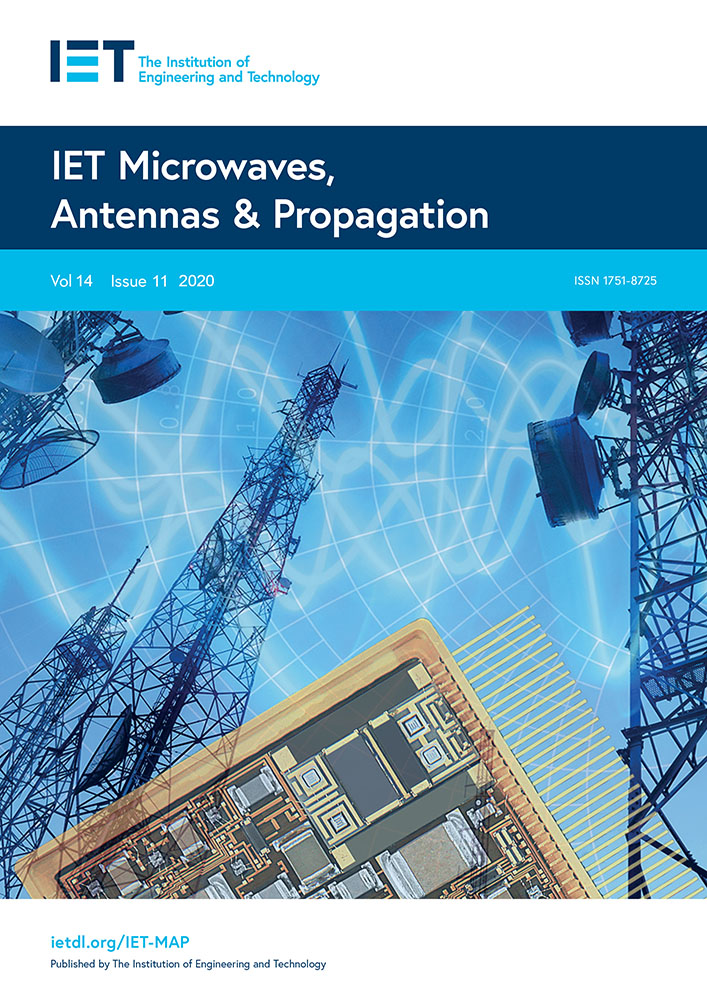Journal Publications
9. A Novel Asymmetric Spoof Surface Plasmon Polariton Transmission Line for High Gain Endfire Radiation Using Phase Reversal Condition,PIER C, 2025.
This paper introduces a novel asymmetric design for spoof surface plasmon polariton (SSPP) transmission line-based endfire antenna. It utilizes the phase reversal condition in an asymmetric SSPP transmission line to achieve high gain endfire radiation. The antenna design uses mono-planar fabrication using the CPW concept. Achieving asymmetry in the SSPP transmission line involves simply bending a straight SSPP transmission line containing H-shaped unit cells. Successive upward and downward bending of the transmission line introduces the phase reversal condition and increases the antenna’s gain. Notably, there are no limitations on the length over which bending occurs to achieve the phase reversal condition. Simple design principles, a single-layer configuration, and high gain are the advantages of the antenna. Results from the fabricated prototype closely match simulation results. Within the 7.7–8.3 GHz operating band, the antenna exhibits a 7.5% bandwidth and a peak gain of 13.6 dBi. It can find applications in various wireless communication systems requiring high gain and endfire radiations.
Authors: Dhruba C Panda, Bikash K. Santi, Biku Raut, Deepak K. Naik and Rajanikanta swain
Doi: http://dx.doi.org/10.2528/PIERC24120604


8. Pac-Man-Shaped Patch-Driven Broadband Circularly Polarized Metasurface Antenna With CMA-Based Quadruple-Mode Excitation, IEEE Access, 2025 (I.F: 3.4)
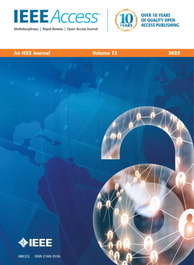

This paper introduces a novel quadruple-mode excited low-profile metasurface (MTS)-based broadband circularly polarized (CP) patch antenna. For a quadruple-mode excitation, the antenna uses a unique pac-man-shaped patch (PSP) as the primary CP radiator and above it a 4 × 4 sized rectangular MTS, which acts as the secondary radiator. Characteristic mode analysis (CMA)-based mode manipulation approach facilitates effortless separation of two orthogonal modes (OMs) of PSP, creating a 90◦ phase difference for circular polarization. Further, to increase the design’s axial ratio bandwidth (ARBW), two additional OMs of the MTS layer are cascaded with the PSP modes. Consequently, the four OMs exhibit quadruple-mode excitation, and the design achieves broadband CP radiation. A prototype of the proposed antenna is fabricated using an FR-4 substrate, and the overall dimension of the antenna is 0.55λ×0.7λ×0.06λ at 6.46 GHz center operating frequency. The 10 dB impedance bandwidth of the antenna is 55.22% (4.68–8.25 GHz), and the 3 dB ARBW is 35.48% (5.1–7.3 GHz). It exhibits a peak gain of 6.2 dBi. The measurement results agree well with the simulation results.
Authors: Deepak K. Naik, Dhruba Charan Panda, Rajanikanta swain, Arjuna Muduli and Sambhudutta Nanda
Doi : https://doi.org/10.1109/ACCESS.2025.3526682
7. A shorting post loaded symmetric non-uniform metasurface antenna for broadband circular polarization,AEU,2024(I.F: 3.0)
This paper proposes a symmetric 3× 4 non-uniform metasurface-based patch antenna to achieve broadband circular polarization. The metasurface consists of rectangular meta-elements symmetrically placed along the vertical axis. To increase the impedance and 3 dB axial ratio bandwidth (ARBW), a shorting post is used in the antenna. The design analysis of the antenna uses the characteristic mode analysis (CMA) of CST MWS. The antenna achieves 39.7%(5.81–8.69 GHz) impedance bandwidth, 33%(5.34–7.45 GHz) 3 dB ARBW, and a peak gain of 7.43 dBi. It is a low-profile antenna with a size of 34× 34× 3.04 mm 3 (0.73 λ× 0. 73 λ× 0. 06 λ, where λ is free space wavelength with an operational frequency of 6.4 GHz). A prototype is fabricated on an I-Tera MT40 substrate. The experimental results agree well with the measured results.
Authors: Subhagya Pani, Dhruba C. Panda,Deepak K. Naik and Rajanikanta swain
Doi : https://doi.org/10.1016/j.aeue.2024.155416

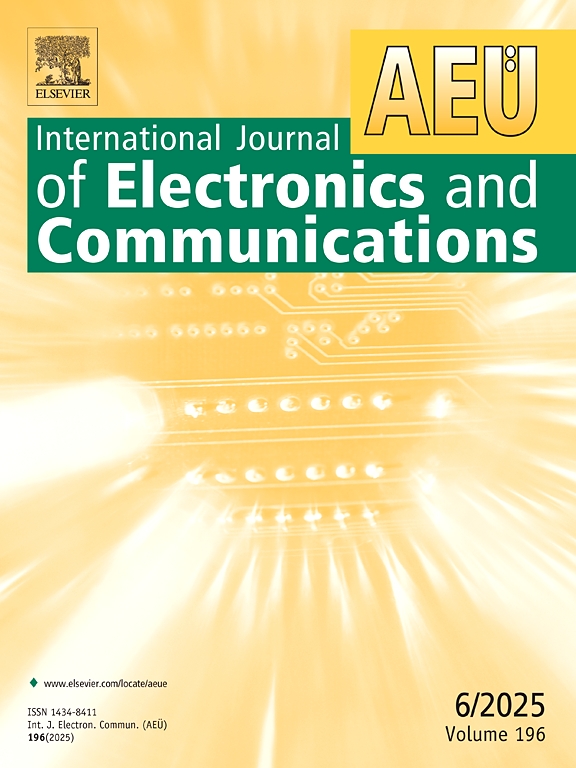


The cutting-edge improvement and continuous shrinking of transistors in E-Systems has resulted in the dense and compact arrangement of devices and interconnects in integrated circuits (ICs). In recent years, VLSI interconnects have been viewed as a particularly promising subject in the realm of IC design. On scaling down, interconnect starts playing a vital role in the overall system performance. The constant progress of technologies has demanded a rapid rise in operating frequencies. Furthermore, the rise in Joule heating and the large increase in grain boundary scattering created a difficult task for future nano-interconnect technology. For choosing interconnect materials like Al, Cu, Au, W, and others, the circuit resistivity and device reliability face difficulty and cause signal integrity, high power dissipation, and crosstalk in IC. To overcome such difficulties, 2D defect-free graphene can be used as an alternative interconnect material due to its high electron mobility and high mean free path, resulting in a high current density and low resistance. In this review paper, a systematic review and present advancements of graphene nanoribbons and their different shapes like L, S, T, U, Z, rectangular, butterfly, etc., have been systematically represented and analysed along with the effect of defects on conductance, which can be used as interconnect in next-generation ICs.
Authors: Simran Patra, Deepak Kumar Naik, Narayan Sahoo
This paper develops a formula for the resonant frequency of microstrip antenna (MSA) using multigene genetic programming (MGGP). As proof of concept, it considers rectangular and circular MSAs. Then it applies the technique to annular ring and C-shaped MSAs. Compared with simulated and earlier reported results, the root mean square error remains below 0.2% in each case.
Authors: Deepak K Naik, Subhagya Pani, Amit K Sahu, Dhruba C Panda
Doi : https://doi.org/10.1088/1742-6596/2471/1/012006

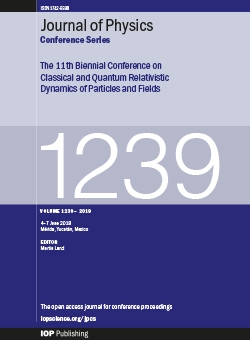
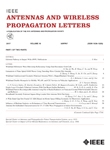

This letter presents a design approach for a defected ground structure (DGS)-based wideband circular microstrip patch antenna using the characteristic mode analysis (CMA). It emphasizes improving two design aspects: 1) cross polarization reduction and 2) bandwidth enhancement. The CMA unveils the intrinsic characteristic modes in the patch and ground plane, and then, undesired modes are suppressed using a DGS, reducing cross-polarized radiations. Another defect, strategically incorporated into the same DGS, enhances a higher-order nonradiating mode to radiate and increases bandwidth. The proposed design fabricated on an FR-4 substrate achieves a ≃ 16% impedance bandwidth (5.7–6.7 GHz) with dimensions 0.8λ0×0.8λ0×0.03λ0 (λ0 being the free-space wavelength at 6 GHz) and 10–15 dB average cross polarization reduction at ±60° angle of boresight. The measured results from a fabricated prototype agree well with the proposed design.
Authors: Deepak K. Naik, Rajanikanta swain, Dhruba Charan Panda and Rabindra Kishore Mishra
Doi : https://doi.org/10.1109/LAWP.2022.3219084
This paper proposes a symmetric 3× 4 non-uniform metasurface-based patch antenna to achieve broadband circular polarization. The metasurface consists of rectangular meta-elements symmetrically placed along the vertical axis. To increase the impedance and 3 dB axial ratio bandwidth (ARBW), a shorting post is used in the antenna. The design analysis of the antenna uses the characteristic mode analysis (CMA) of CST MWS. The antenna achieves 39.7%(5.81–8.69 GHz) impedance bandwidth, 33%(5.34–7.45 GHz) 3 dB ARBW, and a peak gain of 7.43 dBi. It is a low-profile antenna with a size of 34× 34× 3.04 mm 3 (0.73 λ× 0. 73 λ× 0. 06 λ, where λ is free space wavelength with an operational frequency of 6.4 GHz). A prototype is fabricated on an I-Tera MT40 substrate. The experimental results agree well with the measured results.
Authors: Deepak K Naik, Amit K Sahu, Rajeev K Parida, P Raiguru, Dhruba C Panda, Rabindra K Mishra
Doi : https://doi.org/10.1016/j.aeue.2022.154310




This article discusses the design of a compact antenna system for spectrum interweaved cognitive radio (CR). The system consists of a sensing filtenna and three communicating antennas. The sensing ultra-wideband (UWB) antenna is a coplanar-waveguide (CPW)-fed monopole (2.2–11 GHz). The narrowband communicating patch antennas are reconfigurable through a switching mechanism, operating in six different frequency bands (5.54, 6.12, 7.60, 8.25, 9.64, and 10.29 GHz). To block the Wi-MAX and WLAN bands, the proposed design uses a meandering slot and a stepped U-slot in the monopole. Analysis of communicating antennas using the theory of characteristic mode analysis indicates good radiation in the desired frequencies. Isolation among these antennas is better than −18 dB. A constant group delay and linear phase response indicate a good time-domain performance of the proposed UWB antenna. Simulated results match closely with those from measurements on the prototype. The proposed antenna system can find applications in various sectors adopting CR like internet of things.
Authors: Rajeev Kumar Parida, Amit K Sahu, Deepak K Naik, Priyadarshini Raiguru, Dhruba Charan Panda, Rabindra K Mishra
Doi : https://doi.org/10.1002/mmce.23183
This study proposes an ultra-wideband (UWB) metasurface-based beam-switching antenna system. A coplanar (CP) waveguide fed slot antenna (with 49% operating bandwidth) is coupled with a hexagonal metallic aperture to generate CP beam in the 10.2–10.8 GHz band. An octagonal split ring inclusion-based meta-element is designed to achieve 2π transmission phase variation with near-unity magnitude. The principle of the Pancharatnam–Berry metasurface is used to design an offset metasurface superstrate for tilting the main beam of the UWB antenna for the CP band. Measured results (S11, axial ratio, and radiation pattern) agree well with full-wave simulations. The fabricated X-band UWB aperture coupled antenna system uses the metasurface superstrate to achieve a broadside beam for the lower band and tilted beam for the upper band. This antenna system holds promise for next-generation vehicular and satellite communication applications.
Authors: Rajanikanta Swain, Deepak Kumar Naik and Asit Kumar Panda
Doi : https://doi.org/10.1049/iet-map.2019.0994

